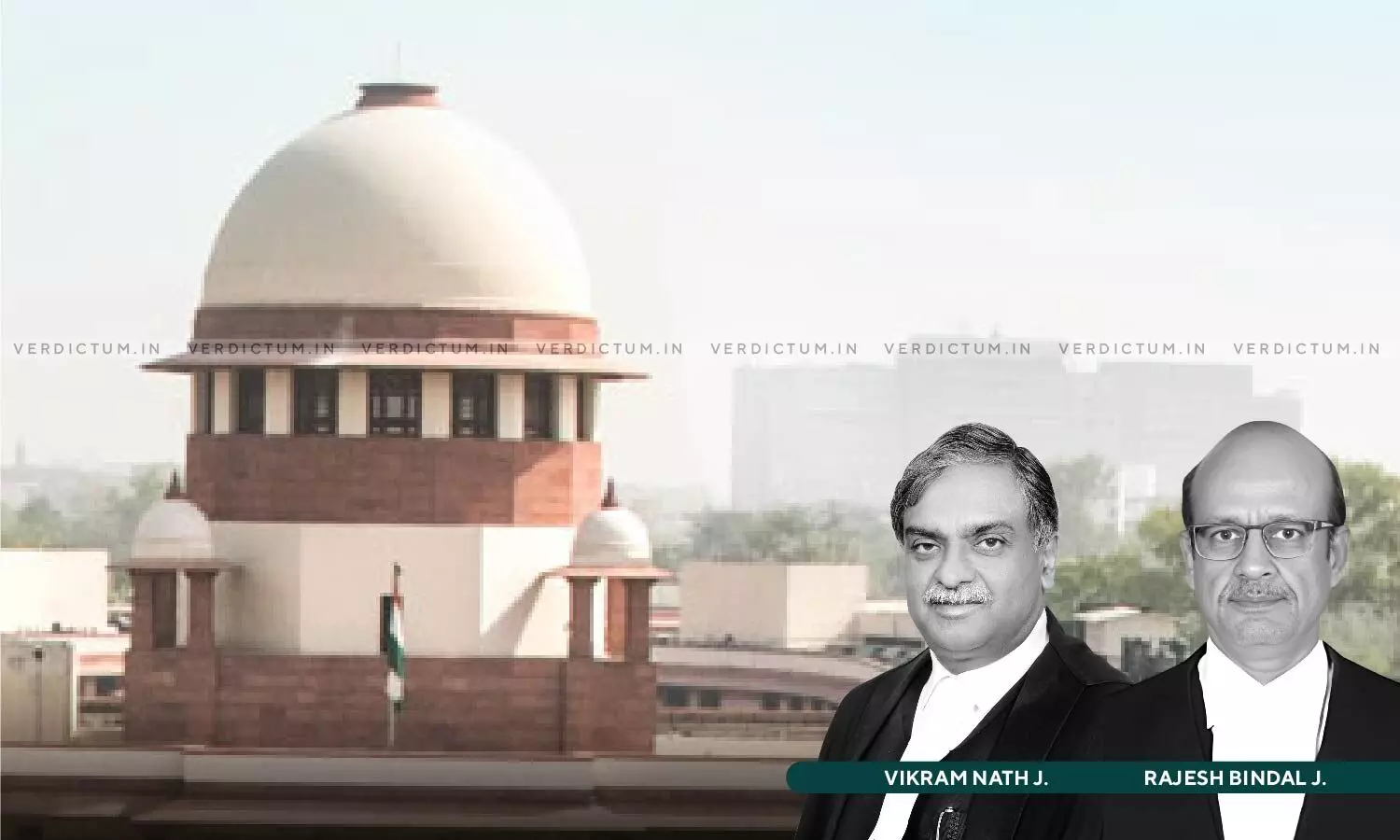
Suit For Possession Must Describe Property In Question With Accuracy & All Details Of Measurement & Boundaries: Supreme Court
 |
|The Supreme Court observed that the suit for possession must describe property in question with accuracy and all the details of measurement and boundaries.
The Court was dealing with an appeal filed by the plaintiff who assailed the correctness of the judgment of the Madras High Court by which the second appeal filed by the defendant was allowed.
The two-Judge Bench comprising Justice Vikram Nath and Justice Rajesh Bindal observed, "Suit for possession has to describe the property in question with accuracy and all details of measurement and boundaries. This was completely lacking. A suit for possession with respect to such a property would be liable to be dismissed on the ground of its identifiability.”
Advocate N.S. Nappinai appeared for the appellant while Advocate Vikas Mehta appeared for the respondent.
In this case, the High Court had restored and confirmed the judgment of the Trial Court and set aside the judgment of the Sub-Judge, Padmanabhapuram. The plaintiff/appellant instituted a civil suit for declaration of title, possession, and permanent injunction against the defendants/respondents. The basis for filing the suit was that earlier in 1976, the defendants had filed a suit for ejectment of the plaintiff and the same was dismissed. First Appeal was dismissed and the Second Appeal was also dismissed by the High Court and the same became final as it was not carried any further.
The plaintiff continued in possession of the property in suit. However, as the defendants were trying to interfere with the possession of the plaintiff, she filed the suit. They contested the suit and filed their written statements and according to them, the defence taken was that they had purchased 8 cents of land by way of registered sale deed in 1974 which was with respect to an open piece of land and did not contain any building as such. The suit of 1976 filed by them was with respect to the constructions raised by the plaintiff and not with respect to 8 cents of land. The plaintiff had no right, title or interest over the suit property and the suit was liable to be dismissed.
The Supreme Court in view of the above facts noted, “The rule of ‘Judicial Discipline and Propriety’ and the Doctrine of precedents has a merit of promoting certainty and consistency in judicial decisions providing assurance to individuals as to the consequences of their actions. The Constitution benches of this court have time and again reiterated the rules emerging from Judicial Discipline. Accordingly, when a decision of a coordinate Bench of same High court is brought to the notice of the bench, it is to be respected and is binding subject to right of the bench of such co-equal quorum to take a different view and refer the question to a larger bench. It is the only course of action open to a bench of co-equal strength, when faced with the previous decision taken by a bench with same strength.”
The Court further said that the doctrine of merger is a common law doctrine that is rooted in the idea of maintenance of the decorum of hierarchy of courts and tribunals and that the same is based on the simple reasoning that there cannot be, at the same time, more than one operative order governing the same subject matter.
“… we carefully examined the judgement of the Trial Court as also the First Appellate Court. What is discernible is that nowhere it is recorded the actual boundary or the measurements of the property in possession of the mother of the appellant (defendant therein). The respondents-plaintiff therein had based her case on the ground that they had purchased 8 cents of open piece of land and the defendant therein had raised construction over some adjoining land, and had trespassed over part of her purchased land as such decree of possession be granted”, added the Court.
Accordingly, the Apex Court allowed the appeal, set aside the judgment of the High Court, and restored the judgment of the Sub-Judge.
Cause Title- Mary Pushpam v. Telvi Curusumary & Ors. (Neutral Citation: 2024 INSC 8)
Appearance:
Appellant: AOR Rakesh K. Sharma, Advocates V. Balaji, A. Krishna Kumar, C. Kannan, and Nizamuddin.
Respondents: AOR Vikas Mehta